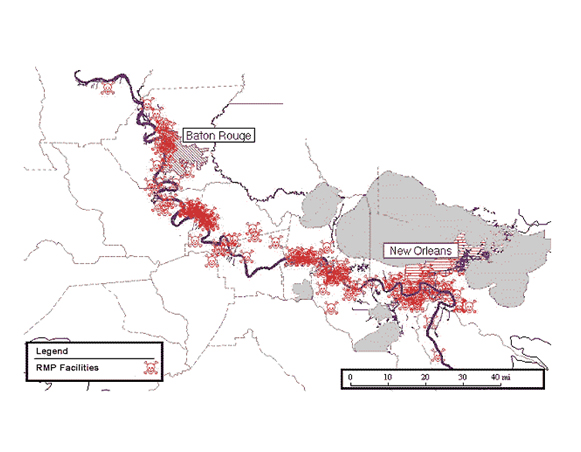Louisiana: A Confluence of Potential Disasters
 Figure 1. While damage was unavoidable from the deadly Hurricane Katrina, questions continue to be asked as to whether some of the damage could have been preventable.
Figure 1. While damage was unavoidable from the deadly Hurricane Katrina, questions continue to be asked as to whether some of the damage could have been preventable.
Another area of Louisiana that is a major source of concern for members of the environmental justice movement is an area known as Cancer Alley.
Cancer Alley is a 100 mile stretch of polluted land along the Mississippi River, winding its way to the Gulf Coast. It is probably the worst toxic region in the U.S. The pollution that plagues “Cancer Alley” comes from more than 300 heavy industrial plants which process such toxic chemicals as chlorine, ammonia, and pvc plastics, produce chemical fertilizers and pesticides, and seven oil refineries. The red on the map below represents locations of plants and refineries responsible for pollutants.
If you were thinking about moving to Louisiana and living in one of the communities along this 100 mile stretch, what questions might you ask regarding environmental health risks?

Extend Your Knowledge
Search a few environmental justice websites and see what other communities are dealing with other environmental issues. Choose one environmental issue you find and compare it to Cancer Alley. What similarities and differences are there?